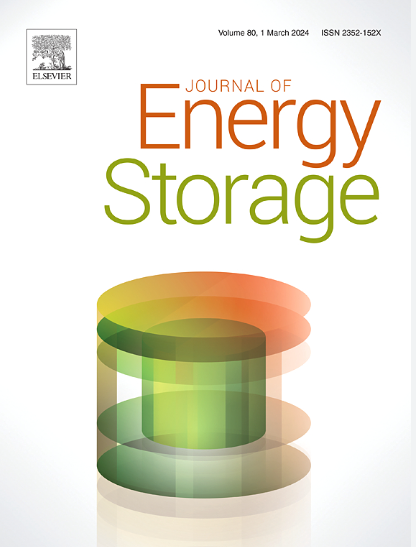Lithium plating in commercial lithium-ion cells: An extensive study combining electrical methods with post-mortem analysis
IF 8.9
2区 工程技术
Q1 ENERGY & FUELS
引用次数: 0
Abstract
The identification of lithium plating represents a fundamental aspect in the development of fast charging algorithms. This extensive study correlates established electrical detection methods with results of a post-mortem investigation. Commercial cells were therefore charged under a variety of operating conditions, including variations in temperature, current, cooling, clamping pressure and state-of-charge. Indicators of Li plating were analyzed using electrical stripping and voltage relaxation measurements. The post-mortem analysis included the digital image processing of over 5000 flatbed scans of anode electrode surfaces. To analyze the Li plating morphology and validate that the observed macroscopic structures are lithium plating, laser-scanning and scanning electron microscopy measurements combined with energy dispersive X-ray (EDX) analysis were performed. The use of a windowless EDX detector enabled the measurement of Li K X-rays at 54 eV, thereby confirming the presence of lithium metal in the grown structures. The structural analysis of the surface deposits revealed, for the first time in a commercial cell, a novel polyhedral Li plating morphology. These results contribute to the field of Li plating detection, as it is essential to understand the plating process and detect metallic lithium at an early stage in order to optimize battery lifetime and increase safety for the target application.
商用锂离子电池中的锂电镀:一项结合电学方法和尸检分析的广泛研究
锂镀层的识别是快速充电算法发展的一个基本方面。这项广泛的研究将已建立的电检测方法与死后调查的结果联系起来。因此,商用电池在各种操作条件下充电,包括温度、电流、冷却、夹紧压力和充电状态的变化。采用电剥离法和电压弛豫法对镀锂的各项指标进行了分析。死后分析包括对5000多个阳极电极表面的平板扫描进行数字图像处理。为了分析锂镀层的形貌,并验证观察到的宏观结构是锂镀层,采用激光扫描和扫描电镜结合能量色散x射线(EDX)分析进行了测量。使用无窗EDX探测器可以测量54 eV下的Li k - α x射线,从而证实在生长结构中存在锂金属。表面沉积物的结构分析首次在商业电池中揭示了一种新的多面体镀锂形态。这些结果有助于锂电镀检测领域,因为了解电镀过程和在早期阶段检测金属锂对于优化电池寿命和提高目标应用的安全性至关重要。
本文章由计算机程序翻译,如有差异,请以英文原文为准。
求助全文
约1分钟内获得全文
求助全文
来源期刊

Journal of energy storage
Energy-Renewable Energy, Sustainability and the Environment
CiteScore
11.80
自引率
24.50%
发文量
2262
审稿时长
69 days
期刊介绍:
Journal of energy storage focusses on all aspects of energy storage, in particular systems integration, electric grid integration, modelling and analysis, novel energy storage technologies, sizing and management strategies, business models for operation of storage systems and energy storage developments worldwide.
 求助内容:
求助内容: 应助结果提醒方式:
应助结果提醒方式:


